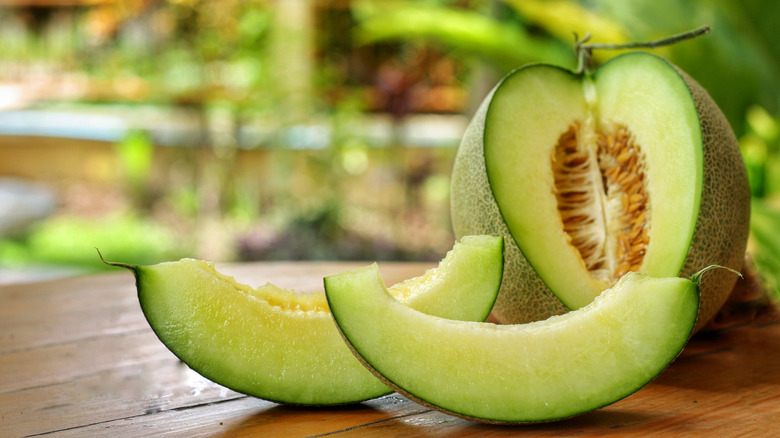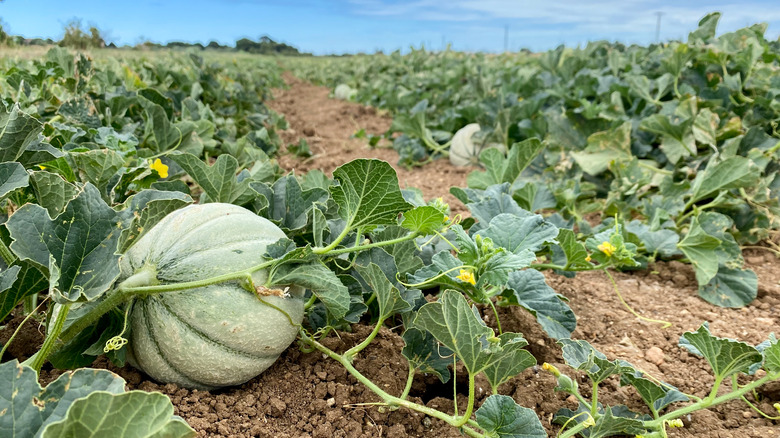Why It's Difficult To Pick A Perfectly Ripe Honeydew
Honeydew is a remarkably divisive melon: People either love it or hate it. The fruit's divisive reputation has even seeped its way into popular culture, receiving ire from Bojack Horseman and praise from Krusty the Clown. The New York Times notes that, while honeydews are often served at breakfast buffets, their primary purpose is decoration: the pale green color contrasts nicely against other fruits. Thanks to its reputation as a flavorless alternative to cantaloupe, the fruit often ends up in the trash at the end of the day. However, honeydew defenders argue that it is often served over or under ripe, and that perfectly ripe honeydew has a deliciously sweet and succulent flavor.
In terms of popularity, honeydew trails behind watermelon and cantaloupe. In 2012, Americans ate five pounds of cantaloupe for every pound of honeydew, despite the fact that cantaloupe is generally more expensive.
While honeydews are strikingly similar to cantaloupes, the two melons have some key differences. According to The University of Arkansas Division of Agriculture, the fruits are closely related and members of the same family. However, honeydew is sweeter and has a smooth, light-colored rind. While cantaloupes generally have orange flesh in contrast to honeydew's light green, Specialty Produce notes that it's possible to find orange honeydew melons, though they're less common than the green variety.
Picking the perfect honeydew can be tricky
Gardeners.com explains why it's so much harder to pick a ripe honeydew. While cantaloupes give off an enticing smell when ripe, honeydews are less fragrant — making it challenging to pick a melon at its prime.
According to Sfgate.com, even cultivators have trouble discerning when honeydews are ready to pick, and often leave the fruit on the vine until they're overripe. However, finding the perfect honeydew isn't as hard as it seems. Look for melons that are entirely yellow on the outside and feel smooth and slightly sticky to the touch. When you've found a promising prospect, gently poke the bottom "blossom" end: the end of a ripe honeydew should feel soft. It's worthwhile to give the fruit a good sniff, too. Even though the scent isn't strong, a ripe honeydew will likely have a faint fragrant smell.
The University of Arkansas Division of Agriculture states that uncut honeydew can be kept in the refrigerator for up to one week. However, if you've bought an unripe honeydew with plans to ripen it at home and eat it at a later date, you're going to be disappointed. Honeydews don't get any sweeter once they've been picked.
Once the fruit has been cut, it should be stored in an airtight container, where it should last up to five days. If you've managed to find the perfect honeydew, though, it'll probably disappear quickly. Consider creative honeydew recipes, like salsa, soup, or ice pops.

